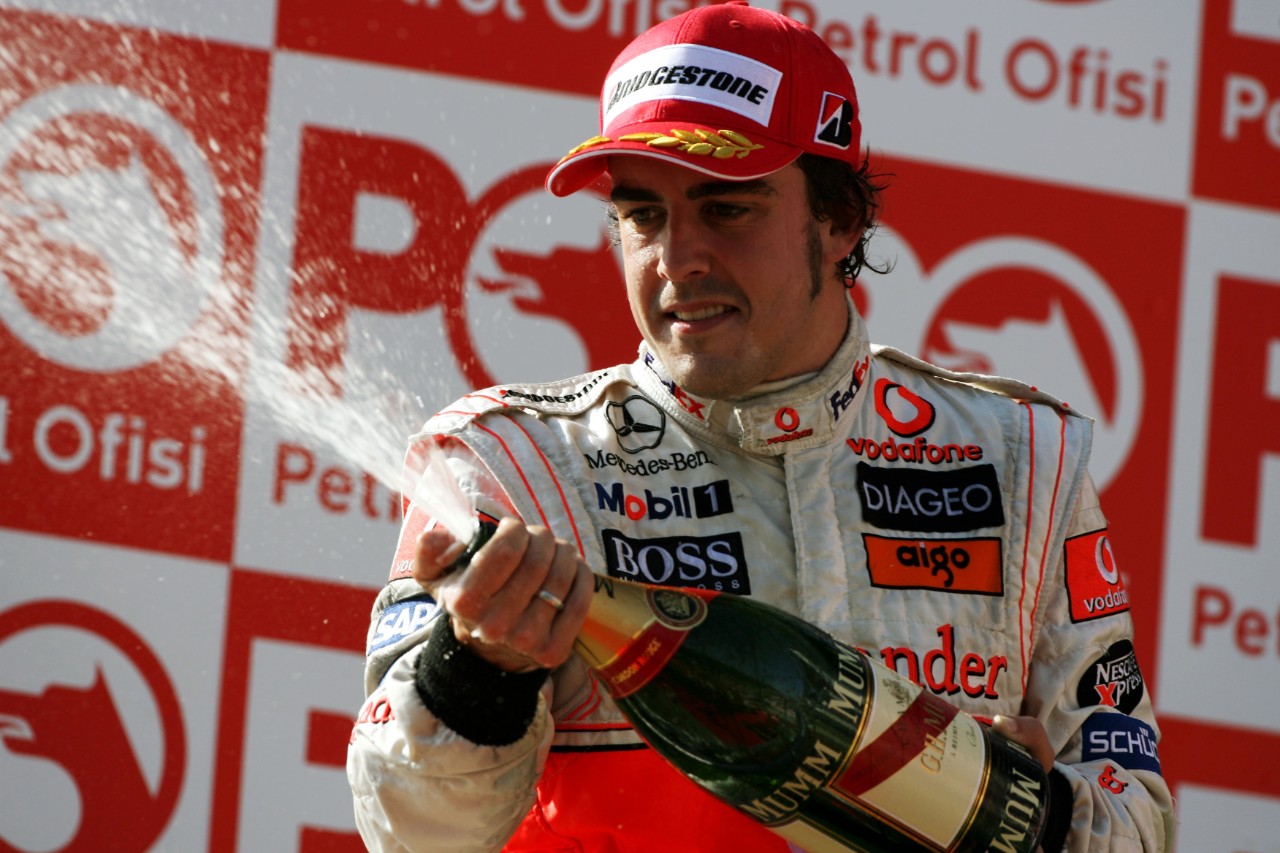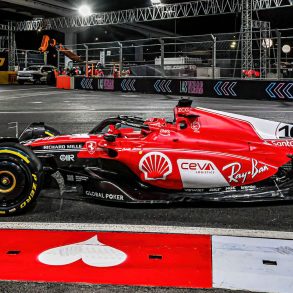Fernando Alonso Biography
Fernando Alonso Díaz was born on July 29, 1981, in the Spanish city of Oviedo. Alonso’s racing career started when he was just three years-old. His father, José Luis Alonso, a big kart fan, decided to build one himself for Fernando’s eight-year-old elder sister, Lorena. Luckily for the sport of Formula 1 she didn’t particularly take to it, but her kid brother Alonso most certainly did. The pedals needed some adjustment, but Fernando was able to go karting. “It all started out as just a plaything, but from the age of five or six it was clear that he had more of a spark than other kids of his age,” says the racing driver’s dad. Local and then national competitions swiftly followed. The young Alonso’s talents seemed limitless and in 1992 he clinched the first of five Spanish karting championships, a tally only overshadowed by a world crown in 1996. Eschewing other series, the Spanish teenager was determined to finish his apprenticeship in karting.

A problematic move to F3000 in 2000 Team Astromega started with Alonso failing to score in the first six races but was saved at the last race in Belgium at Spa-Francorchamps when he won from pole and topped it off with the fastest lap in the rain. Though he only finished fourth in the championship a Formula One test with Minardi that same year secured him his first F1 race drive with the Formula minnow.

The move proved a masterstroke for team and driver alike. With his raw speed and fierce commitment much in evidence, the test seat became a race drive for 2003. Alonso surpassed his promise with ease and, at the age of 22, made Formula One history becoming the youngest-ever pole sitter in Malaysia and then the youngest Grand Prix winner with a maiden victory in Hungary. That, however, was just the beginning. Renault were off the pace in 2004, but the following year Alonso pushed the French team’s ever-improving machine to its limits, drawing on his natural consistency and flair for improvising in even the most challenging circumstances. Claiming the drivers’ crown with two races left to run, Alonso – then the youngest title holder in F1 history – instantly became Michael Schumacher’s heir apparent.

For 2007 he moved to McLaren, giving him the chance to become the first man since Juan Manuel Fangio to score successive championships with different teams. But while the car was quick, so was his team mate Lewis Hamilton, and an intense rivalry saw the pair finish level on points, beaten to the crown by a single point by outsider Kimi Raikkonen.
It was a disappointing end to a frustrating year for Alonso, whose relationship with McLaren grew increasingly strained, particularly after his evidence helped condemn the team in the Ferrari ‘spy scandal’ affair.
It was hence no surprise when news came that he would be returning to Renault for 2008. Renault’s ’08 machine was no championship contender, but that didn’t stop Alonso showing his class. As the season progressed he was pivotal in transforming the R28 from a lackluster performer into a race-winning machine. He took it to back-to-back victories late in the season, first at the inaugural Formula One night race in Singapore, and then in Japan. Sadly that form did not continue into 2010 and the R29’s lack of pace saw Alonso on the podium just once, in Singapore.


Despite that, Alonso took victory at Silverstone and a further nine podiums as he consistently out-drove his machinery en route to fourth in the final driver standings, a solitary point shy of Mark Webber in Red Bull’s title-winning RB7. 2012 was to prove a better season, although in the underachieving F2012 he was made to fight for every point. Stellar results, such as his against-the-odds win in the rain at the Malaysian Grand Prix and victory in front of an adoring home crowd in Valencia, put Alonso at the head of the drivers’ standings for much of the year.
He was eventually overhauled by a rampant Sebastian Vettel with three races to go, but had he not been taken out on lap one in both Belgium and Japan it might well have been him, and not the German, taking a third world title. As it was, Alonso missed out by three points. s seven further podiums meant he finished a clear, albeit distant, second overall to Red Bull’s all-conquering Vettel, despite his Ferrari F138 being not even the second-best car.

Once more, Alonso’ choice of timing for a team move was not fortuitous. While a rejuvenated Ferrari took the fight to Mercedes, McLaren dropped to the back of the grid, their revived partnership with Honda getting off to a highly difficult start. The team’s MP4-30 machine was painfully slow and unreliable, and in it Alonso scored in just two races, ending the 2015 season with a meager 11 points. With out a doubt one of the low points of his racing career. Seeing a driver of Alonso caliber was disheartening to all of his many fans.

This bring us back to an interview where Alonso was asked to name his biggest strength and answered that he thought it was his adaptability and in that answer, his ability to drive around any weakness in his car may also mark his greatest week ness, one that was also placed upon the great Ronnie Peterson. By adapting to the car’s weakness you may actually retard it’s development. Alonso’s ability to build a team around himself as a Senna or Schumacher would have also seems missing.


















